Porter-Cable PC305TP Handleiding
Porter-Cable
Schaafmachine
PC305TP
Bekijk gratis de handleiding van Porter-Cable PC305TP (36 pagina’s), behorend tot de categorie Schaafmachine. Deze gids werd als nuttig beoordeeld door 78 mensen en kreeg gemiddeld 4.3 sterren uit 39.5 reviews. Heb je een vraag over Porter-Cable PC305TP of wil je andere gebruikers van dit product iets vragen? Stel een vraag
Pagina 1/36

Instruction manual
Manuel d'instructions
Manual de'instrucciones
www.portercable.com
INSTRUCTIVO DE OPERACIÓN, CENTROS DE
SERVICIO Y PÓLIZA DE GARANTÍA.
ADVERTENCIA: LÉASE ESTE INSTRUCTIVO
ANTES DE USAR EL PRODUCTO. CATALOG NUMBER
PC305TP
12-1/2 inch (317 mm)
Portable Planer
Raboteuse portative
de 317 mm (12-1/2 po)
Cepillo Portátil de 317
mm (12-1/2 pulg.)

2
IMPORTANT SAFETY INSTRUCTIONS
Read and understand all warnings and operating instructions before using any tool or equipment.
When using tools or equipment, basic safety precautions should always be followed to reduce the risk of personal
injury. Improper operation, maintenance or modification of tools or equipment could result in serious injury and
property damage. There are certain applications for which tools and equipment are designed. PORTER-CABLE
strongly recommends that this product NOT be modified and/or used for any application other than for which it
was designed.
SAFETY GUIDELINES - DEFINITIONS
1. For your own safety, read the instruction manual
before operating the machine. Learning the machine’s
application, limitations, and specific hazards will greatly
minimize the possibility of accidents and injury.
2. Wear eye and hearing protection and always use
safety glasses. Everyday eyeglasses are not safety
glasses. Use certified safety equipment. Eye protection
equipment should comply with ANSI Z87.1 standards.
Hearing equipment should comply with ANSI S3.19
standards.
3. Wear proper apparel. Do not wear loose clothing,
gloves, neckties, rings, bracelets, or other jewelry which
may get caught in moving parts. Nonslip protective
footwear is recommended. Wear protective hair covering
to contain long hair.
4. Do not use the machine in a dangerous environment.
The use of power tools in damp or wet locations or in rain
can cause shock or electrocution. Keep your work area
well-lit to prevent tripping or placing arms, hands, and
fingers in danger.
5. Do not operate electric tools near flammable liquids
or in gaseous or explosive atmospheres. Motors and
switches in these tools may spark and ignite fumes.
6. Maintain all tools and machines in peak condition.
Keep tools sharp and clean for best and safest
performance. Follow instructions for lubricating and
changing accessories. Poorly maintained tools and
machines can further damage the tool or machine and/or
cause injury.
7. Check for damaged parts. Before using the machine,
check for any damaged parts. Check for alignment of
moving parts, binding of moving parts, breakage of parts,
and any other conditions that may affect its operation.
A guard or any other part that is damaged should be
properly repaired or replaced with PORTER-CABLE or
factory authorized replacement parts. Damaged parts can
cause further damage to the machine and/or injury.
8. Keep the work area clean. Cluttered areas and benches
invite accidents.
9. Keep children and visitors away. Your shop is a
potentially dangerous environment. Children and visitors
can be injured.
10. Reduce the risk of unintentional starting. Make sure
that the switch is in the position before plugging in "OFF"
the power cord. In the event of a power failure, move the
switch to the position. An accidental start-up can "OFF"
cause injury. Do not touch the plug’s metal prongs when
unplugging or plugging in the cord.
11. Use the guards. Check to see that all safety devices are
in place, secured, and working correctly to prevent injury.
12. Remove adjusting keys and wrenches before starting
the machine. Tools, scrap pieces, and other debris can
be thrown at high speed, causing injury.
13. Use the right machine. Don’t force a machine or an
attachment to do a job for which it was not designed.
Damage to the machine and/or injury may result.
14. Use recommended accessories. The use of
accessories and attachments not recommended by
PORTER-CABLE may cause damage to the machine or
injury to the user.
15. Use the proper extension cord. Make sure your
extension cord is in good condition. When using an
extension cord, be sure to use one heavy enough to carry
the current your product will draw. An undersized cord
will cause a drop in line voltage, resulting in loss of power
and overheating. See the for the Extension Cord Chart
correct size depending on the cord length and nameplate
ampere rating. If in doubt, use the next heavier gauge.
The smaller the gauge number, the heavier the cord.
16. Secure the workpiece. Use clamps or a vise to hold the
workpiece when practical. Loss of control of a workpiece
can cause injury.
17. Feed the workpiece against the direction of the
rotation of the blade, cutter, or abrasive surface.
Feeding it from the other direction will cause the
workpiece to be thrown out at high speed.
18. Don’t force the workpiece on the machine. Damage to
the machine and/or injury may result.
19. Don’t overreach. Loss of balance can make you fall into
a working machine, causing injury.
GENERAL SAFETY RULES
Failure to follow these rules may result in
serious personal injury.
It is important for you to read and understand this manual. The information it contains relates to protecting YOUR SAFETY and
PREVENTING PROBLEMS. The symbols below are used to help you recognize this information.
indicates an imminently hazardous situation which, if not avoided, result in will death or serious injury.
indicates a potentially hazardous situation which, if not avoided, result in could death or serious injury.
indicates a potentially haz ard ous situation which, if not avoided, result in may minor or mod er ate injury.
NOTICE indicates a practice not related to personal injury which, if not avoided, may result in property
damage.

3
20. Never stand on the machine. Injury could occur if the
tool tips, or if you accidentally contact the cutting tool.
21. Never leave the machine running unattended. Turn
the power off. Don’t leave the machine until it comes to a
complete stop. A child or visitor could be injured.
22. Turn the machine "OFF", and disconnect the machine
from the power source before installing or removing
accessories, changing cutters, adjusting or changing
set-ups. When making repairs, be sure to lock the start
switch in the “OFF” position. An accidental start-up can
cause injury.
23. Make your workshop childproof with padlocks, master
switches, or by removing starter keys. The accidental
start-up of a machine by a child or visitor could cause
injury.
24. Stay alert, watch what you are doing, and use
common sense. Do not use the machine when you
are tired or under the influence of drugs, alcohol, or
medication. A moment of inattention while operating
power tools may result in injury.
25. Use of this tool can generate and
disperse dust or other airborne particles, including
wood dust, crystalline silica dust and asbestos dust.
Direct particles away from face and body. Always operate
tool in well ventilated area and provide for proper dust
removal. Use dust collection system wherever possible.
Exposure to the dust may cause serious and permanent
respiratory or other injury, including silicosis (a serious
lung disease), cancer, and death. Avoid breathing the
dust, and avoid prolonged contact with dust. Allowing
dust to get into your mouth or eyes, or lay on your skin
may promote absorption of harmful material. Always
use properly fitting NIOSH/OSHA approved respiratory
protection appropriate for the dust exposure, and wash
exposed areas with soap and water.
1. Do not operate this machine until it is completely
assembled and installed according to the instructions. A
machine incorrectly assembled can cause serious injury.
2. Obtain advice from your supervisor, instructor, or another
qualified person if you are not thoroughly familiar with the
operation of this machine. Knowledge is safety.
3. Follow all wiring codes and recommended electrical
connections to prevent shock or electrocution.
4. Keep knives sharp and free from rust and pitch. Dull or
rusted knives work harder and can cause kickback.
5. Never turn the machine "ON" before clearing the table of
all objects (tools, scraps of wood, etc.). Flying debris can
cause serious injury.
6. Never turn the machine "ON" with the work- piece
contacting the cutterhead. Kickback can occur.
7. Secure the machine to a supporting surface to prevent the
machine from sliding, walking or tipping over.
8. Be sure that the cutter knives are mounted as
described in the instruction manual and check that all
bolts are firmly tightened before connecting unit to power
source.
9. Lock the speed setting securely before feeding the
workpiece through the machine. Changing speeds while
planing can cause kick-back.
10. Avoid awkward operations and hand positions. A sudden
slip could cause a hand to move into the knives.
11. Keep arms, hands, and fingers away from the
cutterhead, the chip exhaust opening, and the feed rollers
to prevent severe cuts.
12. Never reach into the cutterhead area while the machine is
running. Your hands can be drawn into the knives.
13. Do not stand in line with the workpiece. Kickback can
cause injury.
Failure to follow these rules may result in
serious personal injury.
14. Allow the cutterhead to reach full speed before feeding
a workpiece. Changing speeds while planing can cause
kickback.
15. When planing bowed stock, place the concave (cup down)
side of the stock on the table and cut with the grain to
prevent kickback.
16. Do not feed a workpiece that is warped, contains knots,
or is embedded with foreign objects (nails, staples, etc.).
Kickback can occur.
17. Do not feed a short, thin, or narrow workpiece into the
machine. Your hands can be drawn into the knives and/
or the workpiece can be thrown at high speeds. See the
Operation section of this instruction manual for details.
18. Do not feed a workpiece into the outfeed end of the machine.
The workpiece will be thrown out of the opposite side at
high speeds.
19. Remove shavings only with the power "OFF" and the
cutterhead stopped to prevent serious injury.
20. Properly support long or wide work-pieces. Loss of control of
the workpiece can cause serious injury.
21. Never perform layout, assembly or set-up work on the table/
work area when the machine is running. Serious injury will
result.
22. Turn the machine "OFF", disconnect it from the power
source, and clean the table/work area before leaving
the machine. Lock the switch in the "OFF" position
to prevent un-authorized use. Someone else might
accidentally start the machine and cause injury to
themselves or others.
23. Additional information regarding the safe and proper
operation of power tools (i.e. a safety video) is available
from the Power Tool Institute, 1300 Sumner Avenue,
Cleveland, OH 44115-2851 (www.powertoolinstitute.
com). Information is also available from the National
Safety Council, 1121 Spring Lake Drive, Itasca,
IL 60143-3201. Please refer to the American National
Standards Institute ANSI 01.1 Safety Requirements for
Woodworking Machines and the U.S. Department of Labor
ADDITIONAL SPECIFIC
SAFETY RULES
Product specificaties
| Merk: | Porter-Cable |
| Categorie: | Schaafmachine |
| Model: | PC305TP |
Heb je hulp nodig?
Als je hulp nodig hebt met Porter-Cable PC305TP stel dan hieronder een vraag en andere gebruikers zullen je antwoorden
Handleiding Schaafmachine Porter-Cable

14 Mei 2023
Handleiding Schaafmachine
- Prowork
- Black Decker
- Gamma
- Skil
- Hitachi
- Toolson
- Ferm
- Meec Tools
- Cocraft
- Ozito
- Triton
- Metabo
- Global
- Gude
- Parkside
Nieuwste handleidingen voor Schaafmachine
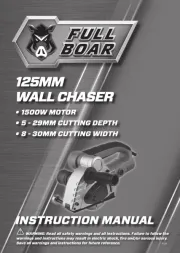
1 September 2025
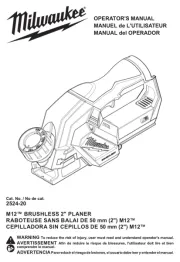
18 Augustus 2025
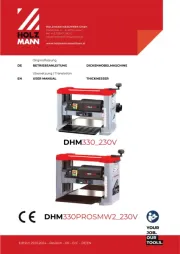
5 Augustus 2025
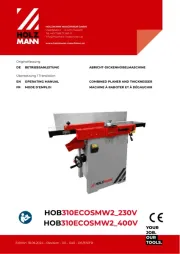
5 Augustus 2025
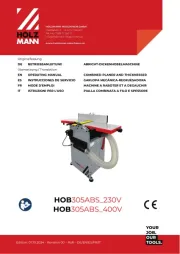
4 Augustus 2025
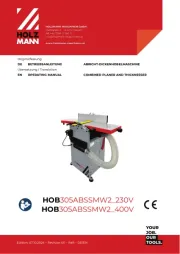
4 Augustus 2025
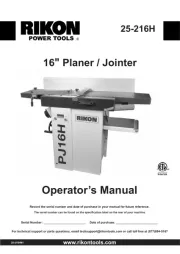
15 Juli 2025
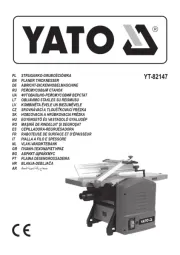
15 Juli 2025
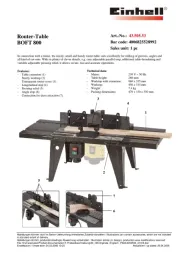
3 April 2025
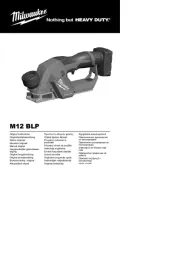
1 April 2025